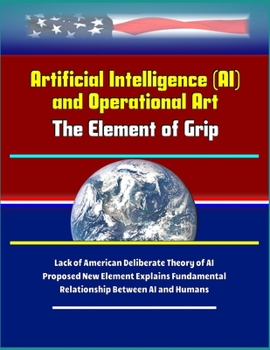Artificial Intelligence (AI) and Operational Art: The Element of Grip - Lack of American Deliberate Theory of AI, Proposed New Element Explains Fundam
The United States lacks a deliberate theory of artificial intelligence (AI) warfare. This contributes to the lack of discussion of the implications of AI at the operational level of war. AI is typically defined using a technological lens devoid of implications for operational art. The proposed new element of operational art "grip," explains the fundamental relationship between AI and humans across two spectrums: autonomy and role-exchange. Grip sets the foundation for a theory of AI warfare that proposes a hypothesis for actions, in addition to revealing the necessity for altering mission command theory. The development of AirLand Battle and the resulting formal emergence of the operational level of war (and operational art) is a historically similar case of how key assumptions influence battlefield visualization. Removing the assumption of "human in the loop" AI warfare reveals a new element of operational art is required to arrange forces in time, space, purpose, in addition the Army mission command theory needs to adjust to enable a commander to move between forms of grip.This compilation also includes a reproduction of the 2019 Worldwide Threat Assessment of the U.S. Intelligence Community.Artificial Intelligence (AI) is anticipated to dramatically change the character of war in the 21st century. The potential applications of AI are only limited by the imagination and public policy. AI possesses the potential to reduce decision cycle time beyond the theoretical human limit. AI is also anticipated to perform command and control functions of human, machine, and hybrid formations. The potential of AI within Autonomous Weapons Systems (AWS) is equally boundless: distributed manufacturing, swarming, and miniaturized advanced sensors create a multitude of configuration permutations for future commanders. The myriad problems associated with the technical, ethical, and conceptual questions surrounding AI have clouded how this technology may be integrated above the tactical level of war. Modern militaries have struggled for centuries to properly integrate evolutionary (and revolutionary) technological advancements. Railroad technology during the U.S. Civil War contributed to both "railhead" armies and General Grant's victories in the Vicksburg Campaign. Twenty-five years later, the French ignored Prussia's railway experimentation to the Third Empire's peril, while failing to grasp the advantage of the chassepot rifle. Carl von Clausewitz stated in On War, that every age had its own kind of war and preconceptions. This monograph will explore current preconceptions and the emergence of AI at the operational level of war.
Format:Paperback
Language:English
ISBN:1699266077
ISBN13:9781699266076
Release Date:January 1
Publisher:Independently Published
Length:74 Pages
Weight:0.43 lbs.
Dimensions:0.1" x 8.5" x 11.0"
Customer Reviews
0 rating





